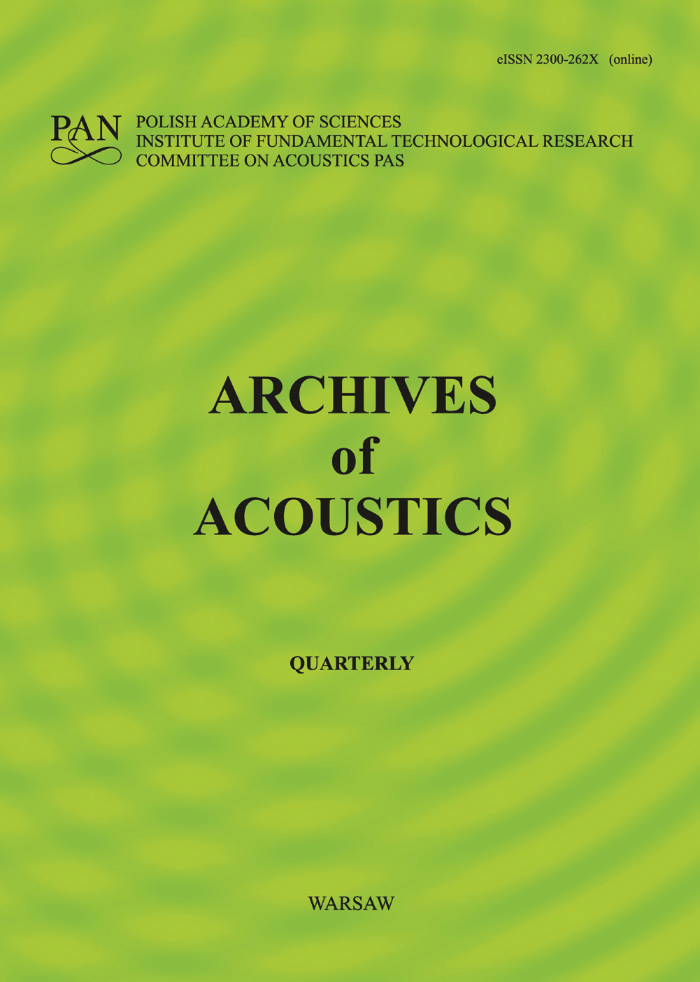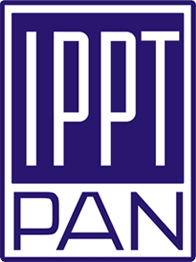Listening Effort in Reverberant Rooms: A Comparative Study of Subjective Perception and Objective Acoustic Metrics
Abstract
Modern room acoustics employs a variety of objective measures to characterize the acoustical properties of interiors. Despite these advancements, the relationship between these parameters and subjective assessments of room acoustics remains unclear. Subjective perception, particularly listening effort (LE), plays a critical role in how individuals experience acoustic environments, even when speech intelligibility (SI) is high. This study aims to bridge the gap between objective acoustic measures and subjective listening experiences. We conducted experiments in three rooms equipped with reverberation enhancement systems, resulting in nine different acoustic settings. Objective parameters, including reverberation time (RT), early decay time (EDT), clarity (C50), and the speech transmission index (STI), were measured. Additionally, subjective SI was assessed, and LE was rated on a 7-step Likert scale by 180 volunteers with normal hearing. The analysis revealed a nonlinear relationship between LE and both RT20 and EDT (R2 = 0.6), with an even weaker correlation for LE vs. C50 (R2 = 0.46). The Pearson correlation coefficient for STI was 0.74, compared to 0.55 for SI. These findings indicate that the relationship between LE and objective parameters, as well as SI, is complex and not straightforward. Our results suggest the importance of incorporating LE into room acoustic design and evaluation. The disparity between objective measures and subjective experiences suggests that LE may be a crucial factor in accurately assessing acoustic environments. This approach sheds the light on a more holistic understanding of acoustic quality that prioritizes human perception.
Keywords:
room acoustics, listening effort, speech intelligibility, reverberation time, early decay time, clarity (C50), speech transmission indexReferences
- Ahnert W., Tennhardt H.P. (2008), Acoustics for auditoriums and concert halls, [in:] Handbook for Sound Engineers, Ballou G.M. [Ed.], Focal Press, Waltham.
- American National Standard (1999), Maximum permissible ambient noise levels for audiometric test rooms (Standard ANSI S3.1-1999 (R2003)).
- Ando Y. (1998), Architectural Acoustics: Blending Sound Sources, Sound Fields, and Listeners, Springer New York, NY.
- Ando Y. (2007), Concert hall acoustics based on subjective preference theory, [in:] Springer Handbook of Acoustics, Rossing T.D. [Ed.], pp. 351–386, Springer New York, NY.
- Bakker R., Gillian S. (2014), The history of active acoustic enhancement systems, [in:] Proceedings of the Institute of Acoustics, 36(Part 2).
- Beranek L.L. (2004), Concert Halls and Opera Houses: Music, Acoustics, and Architecture, Springer.
- Blasinski L., Kociński J. (2023), Perception of reverberation length in rooms with active acoustics enhancement systems, [in:] Proceedings of the 10th Convention of the European Acoustics Association Forum Acusticum 2023, pp. 1627–1634, https://www.doi.org/10.61782/fa.2023.0235.
- Brachmański S. (2021), Test material used to assess speech quality in Poland, [in:] Acoustics, Acoustoelectronics and Electrical Engineering, Witos F. [Ed.], pp. 65–79, Wydawnictwo Politechniki Śląskiej, Gliwice.
- Brachmański S., Dobrucki A. (2021), Impact of the level of noise and echo on the reaction time of listeners in the perception of logatoms, Vibrations in Physical Systems, 32(2): 2021215-1–2021215-8, https://doi.org/10.21008/j.0860-6897.2021.2.15.
- Bradley J.S. (1985), Uniform derivation of optimum conditions for speech in rooms, [in:] Building Research Note (no. BRN-239), https://doi.org/10.4224/40000478.
- Danhauer J.L., Doyle P.C., Lucks L. (1985), Effects of noise on NST and NU 6 Stimuli, Ear & Hearing, 6(5): 266–269, https://doi.org/10.1097/00003446-198509000-00008.
- Everest F.A. (2001), The Master Handbook of Acoustics, 4th ed., pp. 153, McGraw Hill, New York.
- Festen J.M., Plomp R. (1990), Effects of fluctuating noise and interfering speech on the speech-reception threshold for impaired and normal hearing, The Acoustical Society of America Journal, 88(4): 1725–1736, https://doi.org/10.1121/1.400247.
- Gimenez A., Cibrian R.M., Cerda S., Giron S., Zamarreno T. (2014), Mismatches between objective parameters and measured perception assessment in room acoustics: A holistic approach, Building and Environment, 74: 119–131, https://doi.org/10.1016/j.buildenv.2013.12.022.
- Giovannone N., Theodore R.M. (2021), Individual differences in lexical contributions to speech perception, Journal of Speech, Language, and Hearing Research, 64(3): 707–724, https://doi.org/10.1044/2020JSLHR-20-00283.
- Herrmann B., Johnsrude I.S. (2020), A model of listening engagement (MoLE), Hearing Research, 397: 108016, https://doi.org/10.1016/j.heares.2020.108016.
- Hodgson M. (2004), Prediction of speech intelligibility in rooms – A comparison of five methods, The Journal of the Acoustical Society of America, 116(4 Supplement): 2638, https://doi.org/10.1121/1.4785523.
- Houben R., van Doorn-Bierman M., Dreschler W.A. (2013), Using response time to speech as a measure for listening effort, International Journal of Audiology, 52(11): 753–761, https://doi.org/10.3109/14992027.2013.832415.
- Houtgast T., Steeneken H.J.M. (1973), The modulation transfer function in room acoustics as a predictor of speech intelligibility, The Journal of the Acoustical Society of America, 54(2): 557, https://doi.org/10.1121/1.1913632.
- Houtgast T., Steeneken H.J.M. (1984), A multilanguage evaluation of the RASTI-method for estimating speech intelligibility, Acustica, 54(4): 185–199.
- Howard D.M., Angus J.A.S. (2017), Acoustics and Psychoacoustics, 5th ed., Routledge, Oxfordshire.
- International Electrotechnical Commission (2020), Sound system equipment – Part 16: Objective rating of speech intelligibility by speech transmission index (Standard no. IEC 60268-16:2020).
- International Organization for Standardization (2018), Acoustics – Soundscape. Part 2: Data collection and reporting requirements (ISO/TS Standard No. 12913-2:2018), https://www.iso.org/standard/75267.html.
- Johnson J., Xu J., Cox R., Pandergraft P. (2015), A comparison of two methods for measuring listening effort as part of an audiologic test battery, The Journal of the Acoustical Society of America, 24(3): 419–431, https://doi.org/10.1044/2015_AJA-14-0058.
- Just M.A., Carpenter P.A. (1992), A capacity theory of comprehension: Individual differences in working memory, Psychological Review, 99(1): 122–149, https://doi.org/10.1037/0033-295X.99.1.122.
- Kociński J., Ozimek E. (2017), Logatome and sentence recognition related to acoustic parameters of enclosures, Archives of Acoustics, 42(3): 385–394, https://doi.org/10.1515/aoa-2017-0040.
- Krueger M., Schulte M., Brand T., Holube I. (2017), Development of an adaptive scaling method for subjective listening effort, The Journal of the Acoustical Society of America, 141(6): 4680–4693,https://doi.org/10.1121/1.4986938.
- Kuhl W. (1954), About trying to find the best reverberation time for big music studios [in German], Acta Acustica United with Acustica, 4(5): 618–634.
- Kuttruff M. (2009), Room Acoustics, 5th ed., Spon Press, London.
- Lemke U., Besser J. (2016), Cognitive load and listening effort: Concepts and age-related considerations, Ear & Hearing, 37(1): 77S–84S, https://doi.org/10.1097/AUD.0000000000000304.
- Lokki T., Hiipakka J. (2001), A time variant reverberation algorithm for reverberation enhancement systems, [in:] Proceedings of the COST G-6 Conference on Digital Audio Effects (DAFX-01), pp. 28–32.
- Marshall L.G. (1994), An acoustic measurement program for evaluating auditoriums based on the early/late sound energy ratio, The Journal of Acoustical Society of America, 96(4): 2251–2261, http://doi.org/10.1121/1.410097.
- Mattys S.L., Davis M.H., Bradlow A.R., Scott S.K. (2012), Speech recognition in adverse conditions: A review, Language and Cognitive Processes, 27(7–8): 953–978, https://doi.org/10.1080/01690965.2012.705006.
- McGarrigle R. et al. (2014), Listening effort and fatigue: What exactly are we measuring? A British Society of Audiology Cognition in Hearing Special Interest Group ‘white paper’, International Journal of Audiology, 53(7): 433–440, https://doi.org/10.3109/14992027.2014.890296.
- Meyer J. (1978), Acoustics and the Performance of Music, Frankfurt/Main: Verlag das Musikinstrument, Frankfurt/Main.
- Ohlenforst B. et al. (2017), Effects of hearing impairment and hearing aid amplification on listening effort: A systematic review, Ear & Hearing: 38(3), 267–281, https://doi.org/10.1097/AUD.0000000000000396.
- Oxenham A.J. (2017), How we hear: The perception and neural coding of sound, Annual Review of Psychology, 69: 27–50, http://doi.org/10.1146/annurev-psych-122216-011635.
- Peelle J.E. (2018), Listening effort: How the cognitive consequences of acoustic challenge are reflected in brain and behavior, Ear & Hearing, 39(2): 204–214, https://doi.org/10.1097/AUD.0000000000000494.
- Pichora-Fuller M.K. et al. (2016), Hearing impairment and cognitive energy: The framework for understanding effortful listening (FUEL), Ear & Hearing, 37(1): 5S–27S, https://doi.org/10.1097/AUD.0000000000000312.
- PN-EN ISO (2010), Acoustics – Measurement of room acoustic parameters. Part 1: Reverberation time in ordinary rooms [in Polish: Akustyka – Pomiar parametrów akustycznych pomieszczeń. Część 1: Czas pogłosu w zwyczajnych pomieszczeniach] (PN-EN ISO 3382-1:2010).
- Rudner M., Lunner T., Behrens T., Thoren E.S., Ronnberg J. (2012), Working memory capacity may influence perceived effort during aided speech recognition in noise, Journal of the American Academy of Audiology, 23(8): 577–589, http://doi.org/10.3766/jaaa.23.7.7.
- Sabine W.C. (1922), Collected Papers on Acoustics, p. 279, Cambridge (MA), Harvard University Press.
- Sakai H., Ando Y., Setoguchi H. (2000), Individual subjective preference of listeners for vocal music sources in relation to the subsequent reverberation time of sound fields, Journal of Sound and Vibration, 232(1): 157–169, https://doi.org/10.1006/jsvi.1999.2691.
- Shinn-Cunningham B.G., Best V. (2008), Selective attention in normal and impaired hearing, rends in Amplification, 12(4): 283–299, https://doi.org/10.1177/1084713808325306.
- Schmid P.M., Yeni-Komshian G.H. (1999), The effects of speaker accent and target predictability on perception of mispronunciations, Journal of Speech, Language, and Hearing Research, 42(1): 56–64, https://doi.org/10.1044/jslhr.4201.56.
- Stickney G.S, Assmann P.F. (2001), Acoustic and linguistic factors in the perception of bandpass-filtered speech, The Journal of the Acoustical Society of America, 109(3): 1157–1165, https://doi.org/10.1121/1.1340643.
- Strand J.F., Brown V.A., Merchant M.B., Brown H.E., Smith J. (2018), Measuring listening effort: Convergent validity, sensitivity, and links with cognitive and personality measures, Journal of Speech, Language, and Hearing Research, 61(6): 1463–1486, https://doi.org/10.1044/2018-JSLHR-H-17-0257.
- Visentin C., Prodi N., Cappelletti F., Torresin S., Gasparella A. (2018), Using listening effort assessment in the acoustical design of rooms for speech, Building and Environment, 136: 38–53, https://doi.org/10.1016/j.buildenv.2018.03.020.
- Wang Y. et al. (2018), Relations between self-reported daily-life fatigue, hearing status, and pupil dilation during a speech perception in noise task, Ear & Hearing, 39(3): 573–582, https://doi.org/10.1097/aud.0000000000000512.
- Wendt D., Koelewijn T., Książek P., Kramer S.E., Lunner T. (2018), Toward a more comprehensive understanding of the impact of masker type and signal-to-noise ratio on the pupillary response while performing a speech-in-noise test, Hearing Research, 369: 67–78, https://doi.org/10.1016/j.heares.2018.05.006.
- Wild C.J., Yusuf A., Wilson D.E., Peelle J.E., Davis M.H., Johnsrude I.S. (2012), Effortful listening: The processing of degraded speech depends critically on attention, Journal of Neuroscience, 32(40): 14010–14021, https://doi.org/10.1523/JNEUROSCI.1528-12.2012.
- World Health Organization (2021), World report on hearing, https://www.who.int/publications/i/item/9789240020481. (access: 08.05.2025).
- Zekveld A.A., Kramer S.E., Festen J.M. (2010), Cognitive load during speech perception in noise: The influence of age, hearing loss, and cognition on the pupil response, Ear & Hearing, 32(4): 498–510, https://doi.org/10.1097/AUD.0b013e31820512bb.







